Arabic Coffee: A Complete Guide by Coffee Nerds
This is our guide to the types of Arabic coffee, where to get it, and how to make it.
Arabic coffee (or Turkish Coffee, as some people call it) is more than a drink in the Arab world. It’s a way of life. And it’s much more so a way of life than it is in almost any other coffee-drinking nation (and we’ve been to many).
When you go embrace foreign cultures you mostly leave behind fancy coffee as brewed by your local barista. But you welcome other cultures’ ways of doing things.
You might also enjoy our guide to yerba mate as it’s drunk in Argentina.
The Arab world has coffee, but it’s definitely different than coffee in most other parts of the world. And since coffee originated from somewhere around here (Ethiopia or Yemen, according to various anecdotes), they have a little authority on the matter.
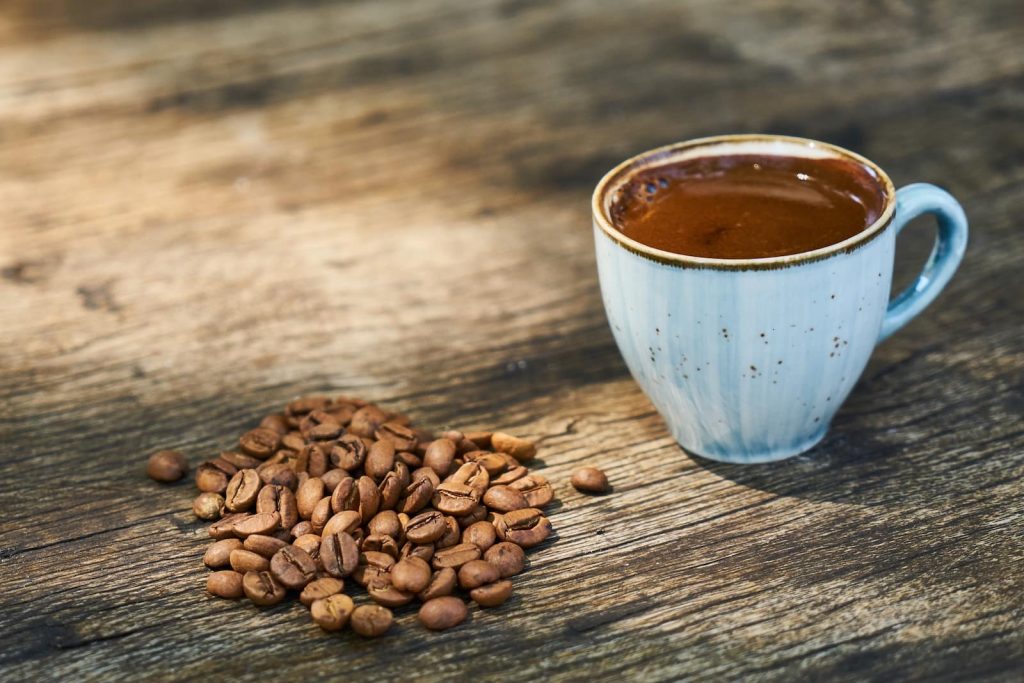
Arabic coffee (قهوة عربية, qahwah 3arabiyya, or more often just qahwah, often pronounced ‘ahweh) is the coffee drunk all over the Arab world and in other Middle Eastern countries, including Turkey, Iran and parts of North Africa.
This serves as a FAQ on Arabic Coffee — what it is, where to get it and how to drink it.
This post may contain affiliate links. Please see our disclosure policy for details.
Arabic Coffee Making Kit
| Preview | Product | Rating | Price | |
|---|---|---|---|---|

|
Al Ameed Coffee (Dark Roast with Cardamom, Pack - 1) | 1,661 Reviews | View on Amazon | |

|
CopperBull THICKEST Solid Hammered Copper Turkish Greek Arabic Coffee Pot Stovetop Coffee Maker... | 1,014 Reviews | $42.60 | View on Amazon |

|
LaModaHome Turkish Coffee cup Set with Saucer, Lid, and Chocolate Bowl, Porcelain Arabic, Greek,... | 46 Reviews | $35.95 | View on Amazon |
(You might also like our guide to reading menus in Arabic. If you’re going local, use the local menus!)
Contents
What is Arabic Coffee?

There are two very distinct kinds of Arabic coffee. The one we’re most familiar with is the Levantine kind; but there is a distinct, Peninsular kind, made with dramatically lighter-roast beans and more spices.
Arabic Coffee is coffee made Arab style. It’s sometimes called “Turkish Coffee” even in Arab countries, like in Egypt. It depends on what language you’re speaking, and who you’re saying it to. If you’re ordering in Arabic, you’ll just call it ‘ahweh, maybe with qualifier for how you want it, like mazboot.
The precise definition of Arabic coffee is vague, but it definitely includes
- Finely ground coffee
- Steeped in a small pot (varying names, kanaka in Egypt)
- Served with the grounds still in it in a small cup, about 3oz (90 ml)
Apart from that, many things can change. People have very strong views about what Arabic or Turkish coffee is, but the views vary a lot between people.
Here are the things that aren’t critical to whether it’s Arabic coffee:
- Origin of the beans: The origin of the coffee doesn’t matter for Arabic coffee. You can have an Ethiopian single origin, an Indonesian blend of Arabica and Robusta or whatever.
- Degree of roast: The roast degree of Arabic coffee doesn’t matter either — though it varies by region (see the description of Peninsular Arabic Coffee below). It can be light, medium or dark roast (as long as it’s a complete roast that’s fully developed). I’ve heard people claim it must be light, but it doesn’t.
- Sugar: Arabic coffee does not have to have sugar. It can be served lightly sweet (mazbuuTa) or straight (saaDa). Neither is mandatory. Most people I know like it lightly sweetened.
- Spices: Finally, some people think that Arabic coffee necessarily has cardamom or other spices in it. Not true. It can be served unflavoured or flavoured, typically with cardamom spice (ground with the coffee).
With those variables, there are two distinct kinds of Arabic coffee, from the Peninsular region, and from the Levant.
Peninsular Arabic Coffee — “clear, like soup”
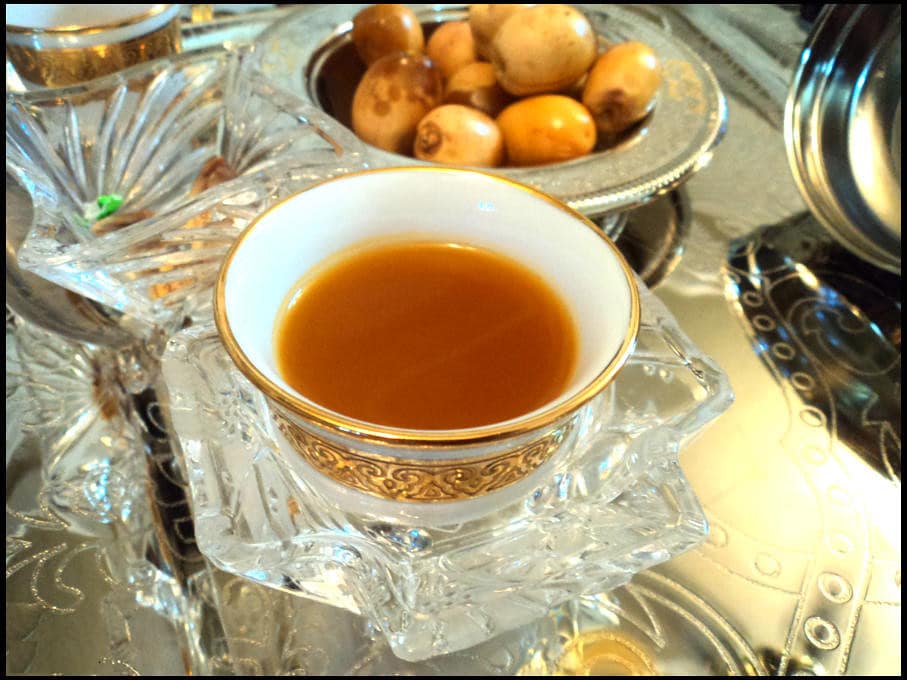
Coffee in the Peninsular region (Saudi Arabia, Yemen, Iraq and the UAE) is made with lightly roasted beans.
It’s often spiced with cardamom, saffron (which gives it a golden colour), cloves and cinnamon. Levantine Arabic coffee is usually only spiced with cardamom (and doesn’t have to be spiced at all).
This coffee is preferred in either dallah (دلة) or kanaka, and served similarly into small coffee cups. It’s often served with dates or sweets.
Levantine Arabic coffee — “dark and bitter”
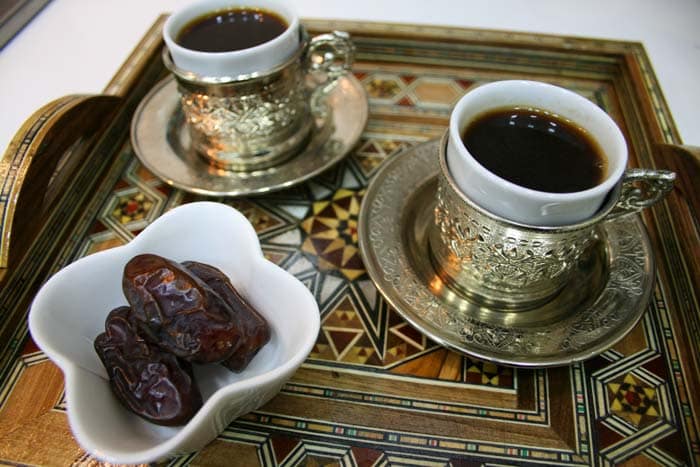
Arabic coffee made in the Levant (Syria, Jordan, Palestine and Lebanon) is made with darker roast coffee, as you can see in the picture. This is much more similar to Turkish coffee.
Unlike Peninsular Arabic coffee, Levantine Arabic coffee is only ever spiced with cardamom — and doesn’t have to be spiced at all.
Where did Arabic Coffee come from?
The word “coffee” itself is of Arabic origin. The word “coffee” entered the English language via the Dutch koffie, borrowed from the Ottoman Turkish kahve, in turn borrowed from the Arabic قَهْوَة (qahwah, “coffee”).
In most Arab countries, it’s pronounced qahweh, with the letter qaff (ق) pronounced. In Iran, it’s pronounced qahveh, as they pronounce all w sounds as v sounds.
In most of Egypt, you pronounce the word for coffee as ‘awheh. The qaff is pronounced as a glottal stop, and the last part (‘eh’) lightened with the Egyptian open-palate accent. In southern Egypt, it’s pronounced gahweh.
It’s all the same drink. It’ll vary, but more with who is making it.
According to a highly apocryphal (but fun) legend, coffee was discovered in Yemen around a thousand years ago.
The legend goes that a goat herder named Ali saw that after his goats ate the fruit of a certain shrub they became more energetic. The enterprising Ali tried it himself and observed the same effects.
Ali took the shrub to the local monastery and used it to keep himself awake during long periods of meditation, but the local monks condemned it as a narcotic and threw the fruits onto the fire. It smelled wonderful as it roast, so they thought maybe they’d give it a second chance. History was made.
Again, very apocryphal, but a nice story.
How is Arabic Coffee different from Turkish Coffee?
Arabic and Turkish coffee are very similar. Both Arabic and Turkish coffee are served black, made with finely ground coffee, with the grounds served with the coffee. The main difference is that Turkish coffee usually does not contain cardamom.
Arabic coffee usually contains cardamom, and/or other spices.
Both Arabic coffee and Turkish coffee can be sweetened, be made of beans of different origins and be roasted to different degrees.
Is Arabic Coffee made of Arabica Beans?
Arabic coffee is not necessarily made entirely of Arabica beans, but it usually is. This is partly just geography (unsurprisingly, Arabica beans originally are from the area), and partly market supply (most of the beans traded on open markets are Arabica).
Most Turkish/Arabic coffee that’s supermarket grade is made of coffee of unknown origins. However, I know that some Arabic coffee is made of an Arabica/Robusta blend, much like most instant or supermarket-grade coffee, for the additional caffeine kick that Robusta provides.
Robusta coffee is grown mostly in South East Asia. It’s usually not as tasty, has around twice the caffeine per gram, and is a lot cheaper. Thus, it’s often blended in to cheaper coffees, including mass-grade instant coffee.
At the same time, you can go to a high-end coffee shop in Egypt like Shaheen (see the next section) and get a quality coffee bean with a broad origin, like Columbian or Brazilian.
Where can you buy Arabic coffee beans (or ground coffee)?
The most convenient option for most people is to buy Arabic coffee is online. Fortunately, Amazon has some great options.
You can also buy Arabic coffee at neighbourhood corner stores (known as “supermarkets”) or from coffee roasters.
In corner stores, a smaller one will typically just have two kinds: with cardamom (حبهان or Habbahaen in Egypt; هال or hael elsewhere in the Arabic-speaking world), or without cardamom.
Slightly larger stores will offer a few brands, plus will also offer a variety of roasts.
The best Arabic coffee we bought was from a branch of a large roaster that supplied cafes (as well as selling retail) called Shaheen Coffee. Look for it on Google Maps and you’ll find a few locations around Cairo. It’s not expensive, with a 250g bag of coffee costing around 40 (depending on the type of bean).
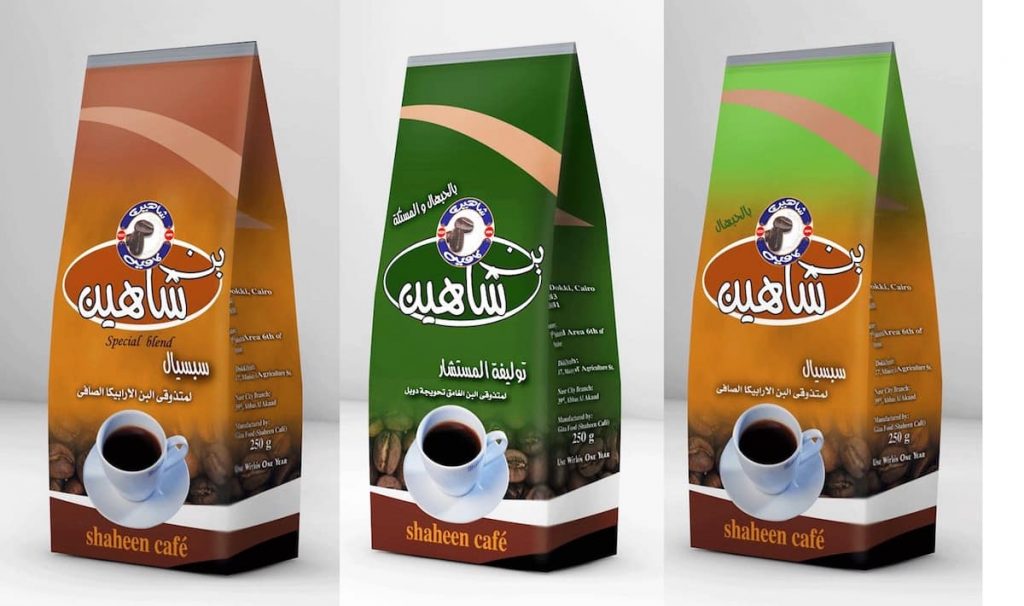
To order from Shaheen, you need to go to the cashier counter and tell them
- What kind of coffee you want (Columbian, etc.)
- What roast (light, medium, dark)
- Whether you want it with cardamom in it
- Whether you want the beans ground. Important: they won’t even ask this. If you want whole beans, you have to be clear.
You pay, get a ticket and go give it to the people behind the counter. A few people will push in ahead of you. I was OK with this because I needed the time to figure out what the hell was going on anyway.
You can also get coffee in a chain of stores known as Abu Auf. They sell nuts and sweets too.
What equipment do you need to make Arabic Coffee?

There are four things you need to make Arabic coffee
- A stovetop or fire
- A grinder (hand grinders are often used, but exhausting because of the fine grind)
- A coffee brewing pot, and
- Serving cups
That’s it.
Grinder
- ENJOY THE PERFECT CUP OF FRESH COFFEE ― The Manual Coffee Grinder by JavaPresse Coffee Company has a built-in adjustable ceramic burr with over 18 manual grind settings to ensure you have 100% precision & control over the coarseness of your grind. This hand coffee grinder is great for all brewing methods to enjoy the perfect cup of fresh coffee and espresso in the morning, and it's designed for use with single-serve or drip coffee makers.
- CONVENIENT, PORTABLE, AND EASY-TO-USE ESPRESSO GRINDER ― The hand crank grinder eliminates 90% of electric grinder noise. JavaPresse's patented manual ceramic burr assembly needs no batteries or cords, making it perfect for fresh coffee at home or on the go. It's the ultimate camping coffee grinder and pairs perfectly with your coffee maker, offering a noise-free grinding experience.
- THE BEST WAY TO START YOUR DAY ― This manual coffee bean grinder is equipped with a professional grade ceramic conical burr for an incredibly consistent coffee grind that heightens flavors of the most exquisite beans in the world. Smell the fresh aroma of fresh ground coffee as you brew them on your espresso machine, drip coffee, French Press, or pour over coffee maker!
- TREAT YOURSELF TO THE HIGHEST QUALITY MANUAL COFFEE GRINDER THAT IS BUILT TO LAST ― Crafted with the same essence as traditional Japanese cookware, our patented ceramic handheld coffee grinder burr is tested through three quality inspections to last 5 times longer than comparable stainless steel coffee burrs. Combined with an impeccable frame and convenient size, this is the pinnacle travel coffee grinder that is a great gift for Father's Day or travel enthusiasts.
- ENHANCE YOUR MORNING WHILE MAKING AN IMPACT AROUND THE WORLD ― Your deliciously crafted cup of coffee from our manual coffee grinder is helping empower coffee farmers to chase a brighter future. A portion of our profits go towards positively impacting our partner’s coffee supply chain and their local communities. Our mission hinges on one fundamental idea: when we care, happiness flows and everyone wins. Including you with this hand coffee bean grinder by JavaPresse.
For the best Arabic coffee, “grinding it fresh is essential”, according to the crew at Barista Hustle.
The vast majority of Arabic coffee is sold pre-ground. But if you can get your hands on some fresh beans, you’ll be in for a real treat!
If you want to use a hand-grinder, be prepared to spend five minutes grinding enough coffee fine enough for one serving. But your guests will appreciate it!
Coffee brewing pot
- Thickest Engraved Copper Turkish Coffee Pot. A Very Authentic Piece.
- Completely Hand Made and Engraved in Turkey by CopperBull.(Check CopperBull logo under the pot to prevent copper plated imitations)
- Copper Thickness : 2mm Capacity: 15Oz (5-6 demitasse cups)
- Height:4" Diameter at base:3.75" Weight:11 Oz.
- Tin lined. Wooden Handle with mother of pearl inlay.
This takes a few different forms across the Middle East and North African world.
The most common kind is a small stovetop single or double serve boiling pot. In Egypt, this is known as a kanaka.
A single-serve kanaka can be really tiny – maybe 60-90ml (2-3 oz.) on average.
Coffee is brewed and served in a dallah (دلة) in the Gulf and Arabian countries. These are more ornate, with a handle.
Serving cups
- HIGH QUALITY TURKISH COFFEE CUP SET: LaModaHome Turkish espresso cups set is made with high quality porcelain and zamac metal. This excellent coffee serving set is perfect for serving Turkish coffee, espresso, Arabic coffee, Moroccan coffee, Greek coffee or macchiato. You can also serve sugar, dry friuts, or chocolate with service dish.
- ELEGANT GIFT SET: This traditional style Turkish coffee serving set is perfect gift for Christmas, Birthday or Housewarming. Great for engagement parties, gatherings with friends, or formal dinners.
- WHAT'S INCLUDED: This traditional style Turkish coffee serving set consists of 9 pieces: 2 Turkish Porcelain demitasse cups, 2 metal cup holders and lids, 2 metal saucers, 1 sugar dish with lid and beautiful embroidered tray.
- CLEANING INSTRUCTION: Porcelain parts are separable and machine washable. Cleaning of the Copper Parts: It should be cleaned using a damp cloth and let dry with a dry cloth.
- To Keep the Copper parts new and shiny, you can clean these parts with cotton against matting. Never leave wet or damp. You can contact us 24/7. If there is an issue regarding your order, please send us a message. We will respond within 24 hours.
Arabic or Turkish coffee is traditionally served in small cups known as finjaan or fanajiin as plural. In Egypt, this is pronounced fingaan or fanagiin.
How do you make Arabic coffee?
Coming from the world of intensely scientifically prepared espresso drinks or pour-overs, it was very weird that nobody could tell me exactly how to make Arabic or Turkish coffee, with measured quantities.
It’s also liberating. You don’t have to worry too much about temperatures or weighing things. The most important variable is the quality and freshness of the original coffee.
This much is consistent
- Take “about a spoonful” of coffee for one serving (a small 60 ml drink), and put it into the kanaka
- Stir in water until it’s nearly full (about 90ml). It can be pre-heated, but not boiling yet, so the grounds are mixed in evenly.
- Put it on heat and gradually bring it to the boil. Not fast; slow heat.
- Watch for the grounds and oils collecting at the top. That’s when it’s ready, shortly after it has boiled.
- Don’t let it boil over. That’s messy and bad luck.
When do people drink Arabic coffee?
Arabic coffee is much more social in Egypt and the Middle East than coffee is elsewhere. It combines the social aspect of coffee in the West with the social aspect of alcohol. If someone comes over, really the only thing you serve is coffee (or tea).
The “coffee” or “tea” is just as strong as it is elsewhere in the world. Entire families will skew one way or the other. If a visitor to a coffee-drinking household prefers tea, the household can make a drama about it. Egypt has a hot-blooded and dramatic culture, after all!
Unlike in Western countries, where people often stop drinking coffee in the afternoon, people in Arab countries drink Arabic coffee until late in the evening, even in the early hours of the morning.
Maybe people adjust to the caffeine, or maybe this is why and how people stay up so late in Egypt, stimulated by caffeine and nicotine. (Alcohol isn’t anywhere near as popular a social lubricant in Arab countries as are coffee and tobacco.)
People do drink coffee in the mornings, but it is different to the morning ritual of coffee that you see in the west, on the way to work. For example, people don’t tell me things like “I’m terrible in the mornings until I’ve had my coffee” or “but first, coffee”. It’s not to say people don’t enjoy it; it’s just not as intense.
People who do drink coffee functionally in urban Cairo are likely to have instant coffee or a simple European-style coffee at home, espresso from an automatic coffee machine at the office or to grab one from a cafe on the way, just like in any other major city around the world.
Where do you drink Arabic coffee?
Apart from in your home, you drink Arabic coffee in an ‘ahweh (قهوة), which also means coffee, confusingly.
An ‘ahweh is a traditional cafe where people — usually just men — do three things: drink coffee, smoke shesha and chat. Depending on the type, they may also stay up extremely late.
There are a couple of levels of these: super local, young local hangouts and then trendy foreigner cafes.
Super local ‘ahwehs
The super local ‘ahwehs are where men from the area go to congregate and relax.
I’d liken them to a small suburban bar. There’s a regular crowd that goes there, and you can go there if you don’t stand out. People will be nice if you’re quiet and don’t disturb their retreat.
If you see a place around the suburbs where you see men sitting and smoking, doing pretty much nothing: you’ve seen an ‘ahweh.
From just looking (and noticing that you’re being looked at) you can tell you’d be an outsider at most of them. You can disturb their peace by sounding different, looking different or just being different.
You don’t want to go into one unless you’re alone, willing to speak some Arabic (they’ll know the word “coffee”), and male. Definitely male.
You almost never see women in an ‘ahweh. Like many parts of Cairo where you have to be careful about travelling as a solo woman, you would feel unwelcome as a woman in many. The only way to tell if women are welcome is to see if there are other women there already. I can guarantee if you do see women in a suburban location, they’ll likely be wearing conservative dress and covering their hair.
These ‘ahweh spots are generally weird-looking institutions. They don’t seem friendly to foreigners or outsiders, especially as you get more suburban. So much so that I didn’t even get a photo of one up close.
Young local hangout ‘ahwehs

These are probably where you should go to experience a bit of local culture. They’re vibrant, bustling and a lot of fun!
There are clusters of them in cooler parts of the city, like in Heliopolis.
Cafes
You can also drink Turkish coffee at cafes downtown in the big cities.
These places are typically known as “cafes”. They’ll also serve food with often a full meal menu, plus cappuccinos and other drinks.
They’re distinct because in an ‘ahweh, typically all you can get is coffee and a shesha pipe. Maybe a few snacks.
A cafe is a good place for you to try a shesha pipe, too, if you’re curious (though I wouldn’t recommend it).






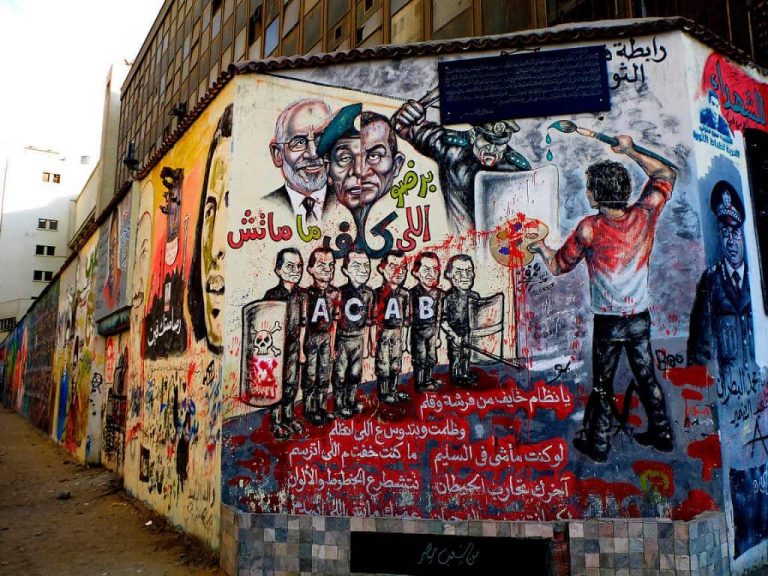
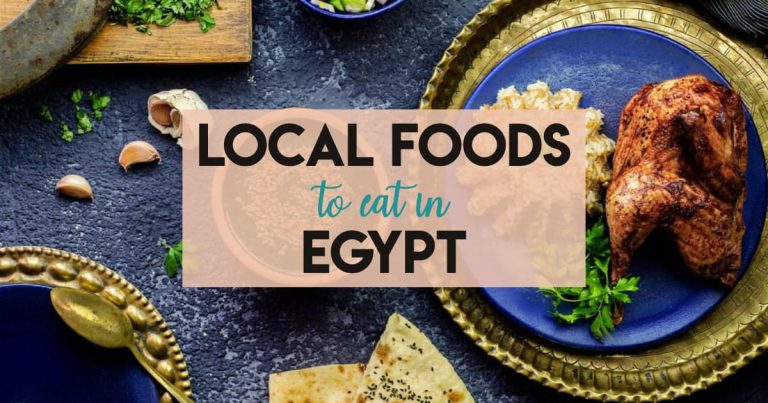
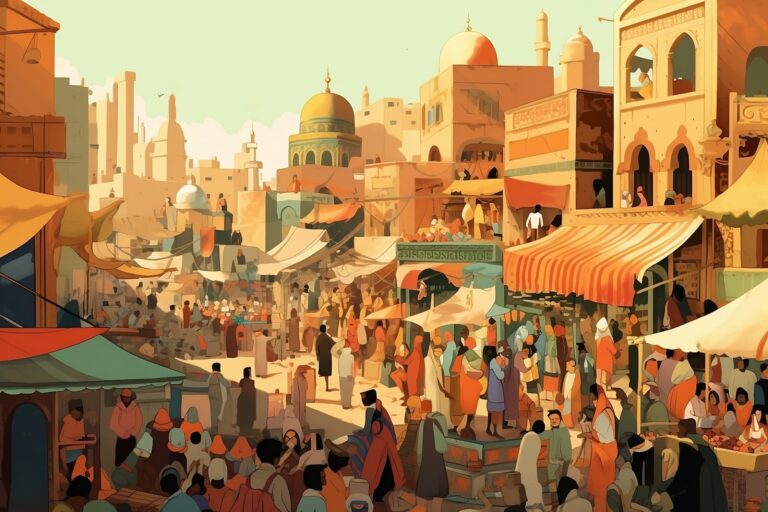

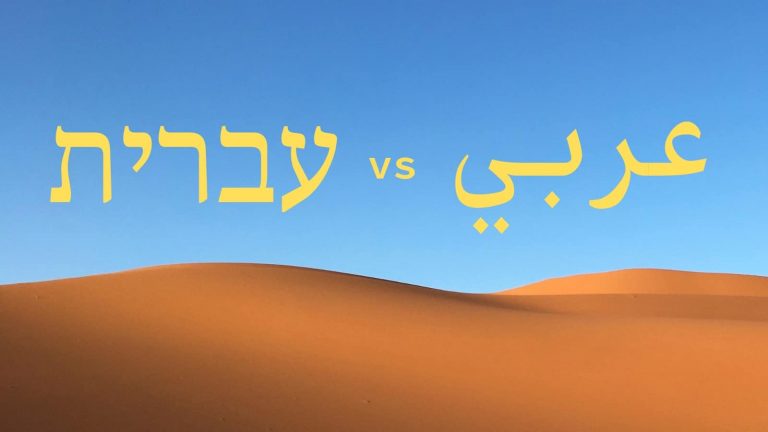
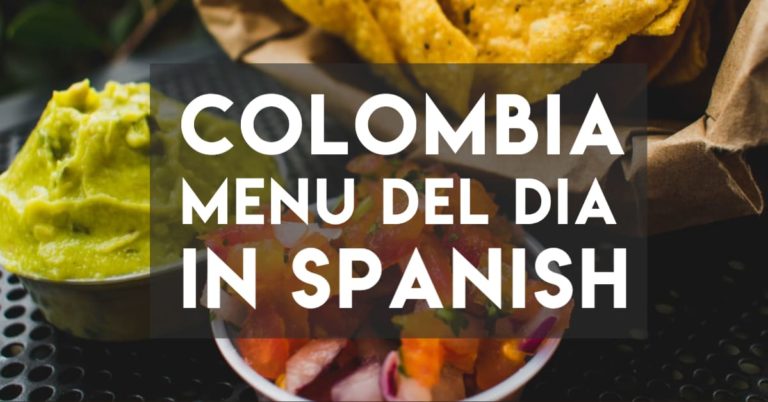
Hey Dana, Qahwa is a very refreshing drink I tried in UAE. Also, recently came to know that it is available in different flavors in different regions. Thanks for sharing such amazing info about Arabic coffee.
Dana, last summer my wife and I found a Turkish shop in Monterey California. I was so excited to try Turkish coffee. Unfortunately, the “Turkish” proprietor pulled out a tin can of Turkish coffee that didn’t even have a roast date on it. Obviously, we’re not talking fresh. Far from it. The results were not surprisingly horrible. Here’s the good news. I went home and started experimenting making my own with super fresh roasted and super smooth coffee beans. Wow! What an amazing difference. Well, it shouldn’t be too surprising that “fresh” roasted is going to beat stale and old… Read more »
thanks